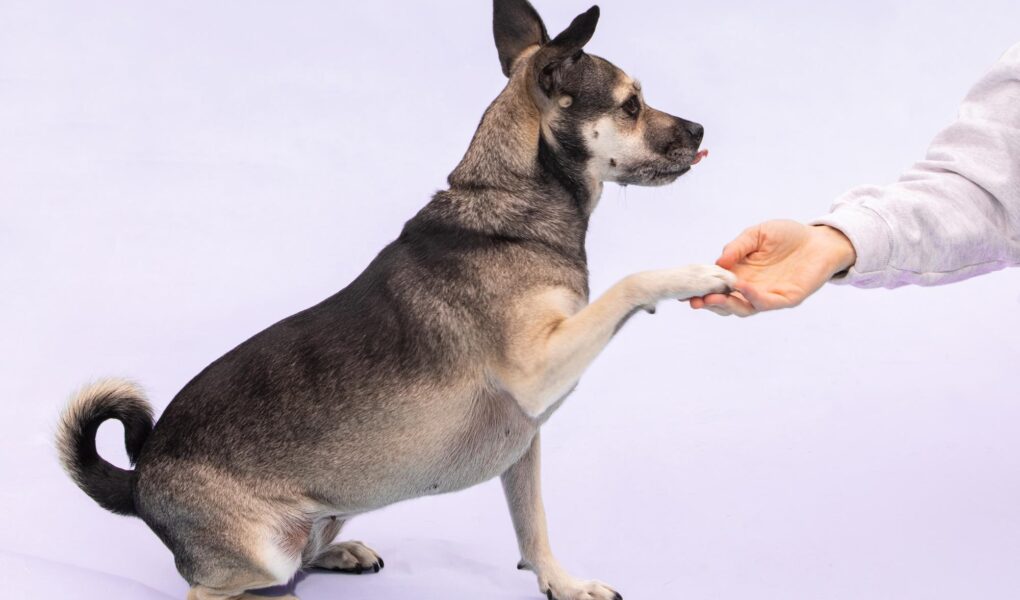Introduction: The Art and Science of Training Your Dog
Bringing a dog into your home is akin to welcoming a new family member, filled with joy, companionship, and yes, a splash of chaos. But with that wagging tail and soulful eyes comes the responsibility of training—a journey that can be as rewarding as it is challenging. Just as each breed possesses its unique traits, every dog exhibits its own personality, requiring an approach that is both artful and informed. Whether you’re aiming to teach basic commands or tackle more complex behaviors, understanding the principles of canine training can be your compass. In this article, we’ll explore effective strategies, insights, and tips to help you forge a stronger bond with your furry friend while ensuring they become a well-mannered member of your household. So, leash up and get ready to embark on an enlightening adventure into the world of dog training!
Table of Contents
- Essential Foundations of Positive Reinforcement Techniques
- Navigating Common Behavioral Challenges with Effective Strategies
- The Importance of Socialization and Structured Playtime
- Maintaining Consistency and Adaptability in Training Routines
- Q&A
- Key Takeaways
Essential Foundations of Positive Reinforcement Techniques
Understanding the principles of positive reinforcement is crucial in shaping your dog’s behavior and fostering a strong bond between you. This technique relies on rewarding desired behaviors, which encourages your dog to repeat them. A few key elements to consider include:
- Timing: Reward your dog immediately after they perform the desired action to help them associate the behavior with the reward.
- Consistency: Be consistent with both cues and rewards. This helps your dog to learn faster and more effectively.
- Variety of Rewards: Use a range of rewards, such as treats, praise, or playtime, to keep your dog motivated and engaged.
It’s essential to tailor your approach based on your dog’s individual temperament and preferences. Create a positive learning environment by focusing on their strengths and using rewards that resonate with them. Consider incorporating a simple feedback system to assess progress:
| Behavior | Response | Reward |
|---|---|---|
| Sit | Performed in less than 5 seconds | Small treat |
| Stay | Maintained position for 10 seconds | Praise and a toy |
| Come | Came running when called | Playtime in the yard |
Navigating Common Behavioral Challenges with Effective Strategies
When your furry friend exhibits challenging behaviors, it’s important to stay calm and focused on solutions. Consistency is key in shaping your dog’s actions. Make sure everyone in your household is on the same page with signals and commands. This reduces confusion for your pup and enhances learning. To assist you in managing these common issues, consider implementing the following strategies:
- Positive Reinforcement: Reward desired behaviors with treats or praise to encourage repetition.
- Redirecting Attention: Distract your dog from undesirable behaviors by engaging in play or training exercises.
- Structured Routine: Establish a daily schedule for meals, walks, and playtime to create stability.
- Socialization: Gradually introduce your dog to various environments and people to build confidence.
Monitoring your dog’s behavior can also reveal patterns that help you understand their triggers and reactions. Use a simple table to track specific issues and how they correlate with different situations:
| Behavior | Trigger | Response Strategy |
|---|---|---|
| Excessive Barking | Strangers or Doorbells | Introduce a ‘quiet’ command and use treats for compliance. |
| Jumping on People | Visitors | Teach the ‘sit’ command and reward calm behavior. |
| Pulling on Leash | Exciting Environments | Practice loose-leash walking techniques and use toys as encouragement. |
The Importance of Socialization and Structured Playtime
Socialization is a crucial element of your dog’s development, fostering a balanced temperament and facilitating healthy relationships with both people and other animals. Exposure to a variety of environments, sounds, and experiences helps your furry friend become adaptable and confident. Aim to introduce your dog to different settings progressively, allowing them ample time to acclimate and respond positively. Consider integrating these aspects into your socialization routine:
- Meet and Greet: Arrange playdates with other dogs.
- Varied Environments: Visit parks, busy streets, and different homes.
- Interaction with People: Encourage encounters with adults and children.
Structured playtime complements socialization by providing a framework that engages your dog’s physical and mental abilities. Engaging in activities that challenge their problem-solving skills can enhance focus and reduce behavioral issues. Incorporate games that encourage teamwork, such as fetch or tug-of-war, which not only burn off excess energy but also strengthen your bond. Here’s a table outlining some fun structured play ideas:
| Activity | Benefits |
|---|---|
| Agility Courses | Boosts confidence and coordination. |
| Hide and Seek | Enhances problem-solving skills and recall. |
| Group Training Sessions | Encourages discipline and social skills. |
Maintaining Consistency and Adaptability in Training Routines
Establishing a training routine for your dog is essential, but equally important is maintaining a level of consistency throughout the process. Dogs thrive on repetition and clear expectations, so crafting a structured environment that reinforces their learning is vital. Incorporate specific commands, consistent timing, and positive reinforcements into your sessions. Consider the following tips to enhance consistency:
- Set a regular training schedule: Train at the same time each day to build a habit.
- Use the same commands: Stick to the same phrases and gestures to avoid confusion.
- Incorporate rewards: Utilize treats or praise consistently to motivate your dog.
However, the key to successful dog training is also the ability to adapt to your dog’s evolving needs. As your dog matures, so too will their learning capabilities and attention spans, necessitating adjustments to your routine. Flexibility is essential; be prepared to modify your training strategies based on your dog’s behaviors and responses. Consider these strategies for adaptability:
- Assess progress regularly: If your dog isn’t responding to a command, change your approach.
- Diversify training environments: Introduce new locations to enhance focus and reduce distractions.
- Mix up rewards: Experiment with different types of rewards to maintain excitement and engagement.
Q&A
Q&A: Training Your Dog
Q: Why is training important for my dog?
A: Training your dog is crucial not only for safety but also for building a strong, positive relationship between you and your furry friend. A well-trained dog is more manageable in various situations, enhances your dog’s confidence, and contributes to a harmonious household.
Q: What age should I start training my dog?
A: The best time to start training is as early as possible! Puppies can begin basic training as soon as they are around 7 to 8 weeks old. However, it’s never too late to teach an old dog new tricks. Consistency and patience are key factors at any age.
Q: What basic commands should I teach my dog first?
A: Start with foundational commands that promote good behavior and safety. “Sit,” “stay,” “come,” and “down” are essential. These commands lead to a more obedient dog and provide a framework for more advanced training in the future.
Q: How long should each training session be?
A: Keep sessions short and sweet! For puppies, around 5-10 minutes is ideal due to their limited attention spans. For adult dogs, aim for 10-15 minutes. Frequent, short sessions tend to be more effective than long, infrequent ones.
Q: What training methods work best?
A: Positive reinforcement—rewarding your dog with treats, praise, or play when they exhibit desired behaviors—is highly effective. Techniques such as clicker training can also enhance communication and learning by marking exactly when your dog performs a desired action.
Q: How can I correct unwanted behaviors?
A: Redirecting unwanted behavior rather than punishing your dog is more effective. For example, if your dog is chewing on furniture, provide an appropriate chew toy. Always reward good behavior and strengthen positive habits.
Q: What resources can I use to improve my training skills?
A: There is a wealth of resources available! Consider books, online courses, reputable dog training websites, or local training classes. Observing experienced trainers can also provide valuable insights into effective techniques.
Q: My dog seems wary during training. What should I do?
A: Create a positive atmosphere by training in a calm environment and using high-value rewards to motivate your dog. Take breaks if your dog appears stressed and gradually build their confidence through patience and gentle encouragement.
Q: How can I make training fun for my dog?
A: Incorporate play into training sessions! Use toys or incorporate games like hide-and-seek to keep your dog engaged. Mixing up the routine and including fun will help your dog associate training with enjoyable experiences.
Q: What do I do if I’m struggling with training?
A: Don’t be discouraged! Training can be a journey filled with ups and downs. If you’re struggling, consider seeking help from a professional dog trainer who can provide tailored guidance. Sometimes, a fresh perspective can make all the difference.
Q: How can I ensure consistency in my dog’s training?
A: Consistency is vital for effective training. Use the same commands, gestures, and rewards across all family members who interact with your dog. Creating a routine helps reinforce learning and behavior expectations over time.
Q: How often should I train my dog?
A: Aim for daily training sessions, even if they’re brief. Regular practice reinforces learning and strengthens your bond. Mixing structured training with spontaneous learning opportunities, like practicing commands during walks, can also be beneficial.
Whether you’re a first-time dog owner or an experienced handler, training is a vital and rewarding aspect of dog ownership. With patience, consistency, and the right techniques, you and your furry companion can embark on a journey filled with fun and understanding!
Key Takeaways
As we wrap up our exploration of dog training, it’s important to remember that each dog is unique, with its own personality, quirks, and learning styles. Training is not just about teaching commands; it’s about building a bond based on trust, respect, and mutual understanding. Whether you opt for positive reinforcement, consistency, or patience, know that the journey may be filled with both challenges and triumphs.
Embrace each step, celebrate the small victories, and remember that every moment spent training is an investment in a brighter, more harmonious life together. With dedication, love, and a sprinkle of creativity, you can unlock your dog’s potential and create a companion who is well-behaved and joyful. So, gather your treats, grab that leash, and embark on this rewarding adventure—your dog is waiting, eager to learn and share in the joy of this incredible partnership. Happy training!



